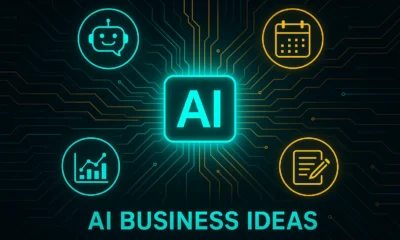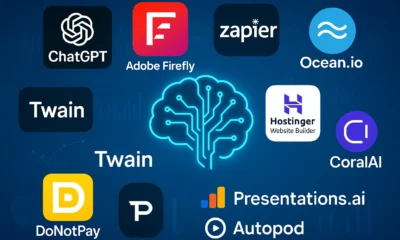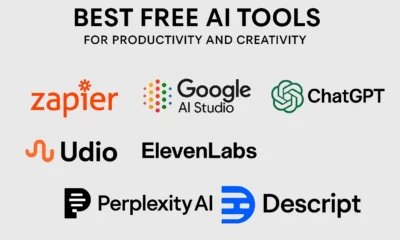AI Tools & Reviews
AI Tools for Business: Discover the 15 Secret Tools for Million-Dollar Growth
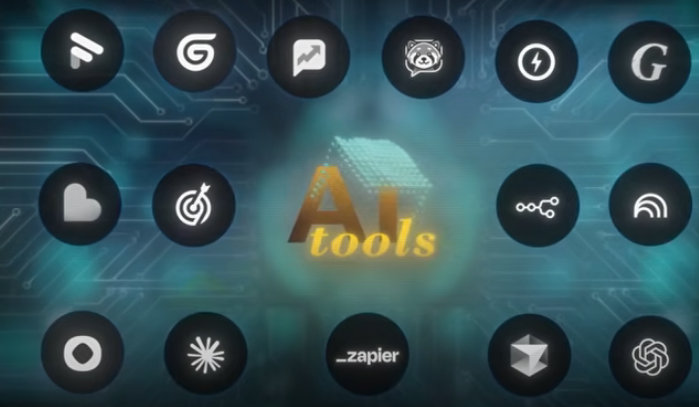
Are you ready to build a million-dollar business without the overhead of hiring more employees? Renowned entrepreneur Dan Martell is pulling back the curtain to share the 15 secret AI tools for business that he personally implements across his companies. This isn’t just another ChatGPT walkthrough; this is an exclusive look into the applications that power productivity, drive efficiency, and keep you lightyears ahead of the competition. By leveraging these powerful platforms, you can transform your workflow, automate complex processes, and unlock unprecedented growth.
Let’s dive into the essential toolkit that will help you scale your operations and revolutionize the way you work.
1. Fathom AI: Your Automated Meeting Copilot
First on the list is Fathom, a meeting copilot that records, transcribes, and instantly generates role-specific summaries of every call. Imagine having a professional notetaker in every meeting that captures every detail, action item, and decision, freeing you and your team to be fully present and engaged.
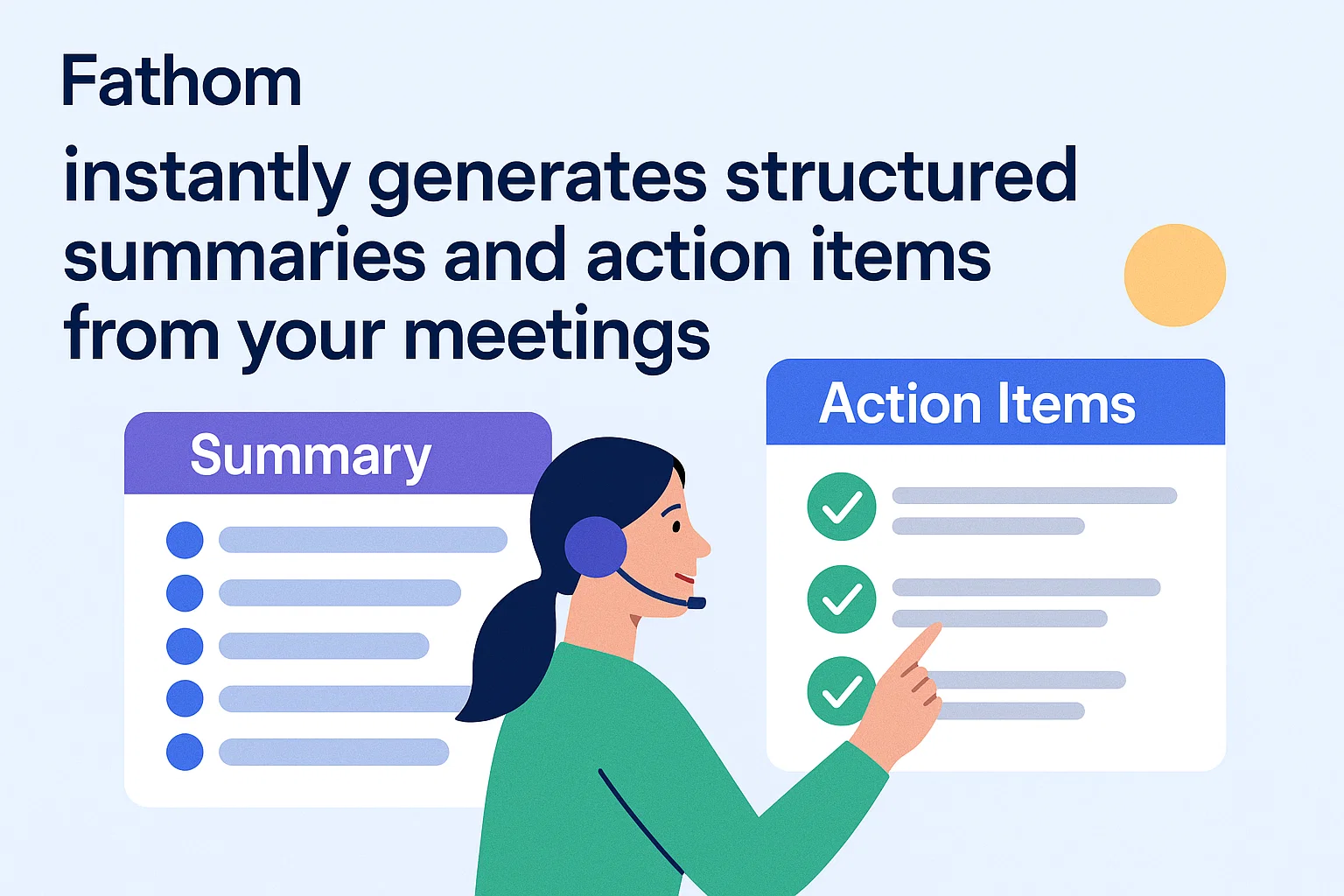
Key Benefits:
- Eliminates Manual Note-Taking: Stop focusing on taking notes and start focusing on the conversation. Fathom ensures no opportunity is missed because you were too busy writing things down.
- Instant, Actionable Summaries: At the end of a meeting, Fathom provides a complete summary, including takeaways, topics, and next steps for each attendee.
- Ask Fathom AI: You can query your past meetings. Ask questions like, “What were the updates on the revenue?” or “What did my sales guy say?” and get instant answers.
Fathom is a foundational tool for creating an “organizational AI,” a central brain for your company that understands every conversation and decision ever made. For more on tools like this, check out our reviews on other productivity-boosting AI platforms.
2. Zapier: The Ultimate Workflow Automation Builder
Zapier is the glue that connects all your different applications. It automates workflows between over 7,000+ apps, allowing you to create automated processes that run 24/7 without any manual intervention. If you want to build a million-dollar business, you must automate your delivery system, and Zapier is the engine that makes it happen.
For instance, you can create a “Zap” where a customer filling out a form on your website automatically triggers an email, adds them to a CRM, and notifies your sales team in Slack. By designing these workflows once, you create a system that works for you even while you’re on vacation.
3. Gumloop: Visual Workflow Automation with AI Brains
While similar to Zapier on the surface, Gumloop takes automation a step further by incorporating AI-driven decision-making into its visual workflow builder. Instead of just connecting apps, Gumloop allows you to create complex processes where an AI agent can make logical decisions and route tasks accordingly.
This is perfect for financial automation, lead scoring, and even complex recruiting funnels. Gumloop’s visual platform makes it easy to see the entire process, while its AI core allows for dynamic, intelligent routing that isn’t hardcoded, making it more flexible than traditional automation tools.
4. Cursor: The AI-Powered Code Editor
Cursor is an AI-native code editor that is revolutionizing how software is built. It turns plain language prompts into production-ready code, empowering even non-technical team members to build and innovate. A person in finance can now write code to automate their reports simply by describing what they need.
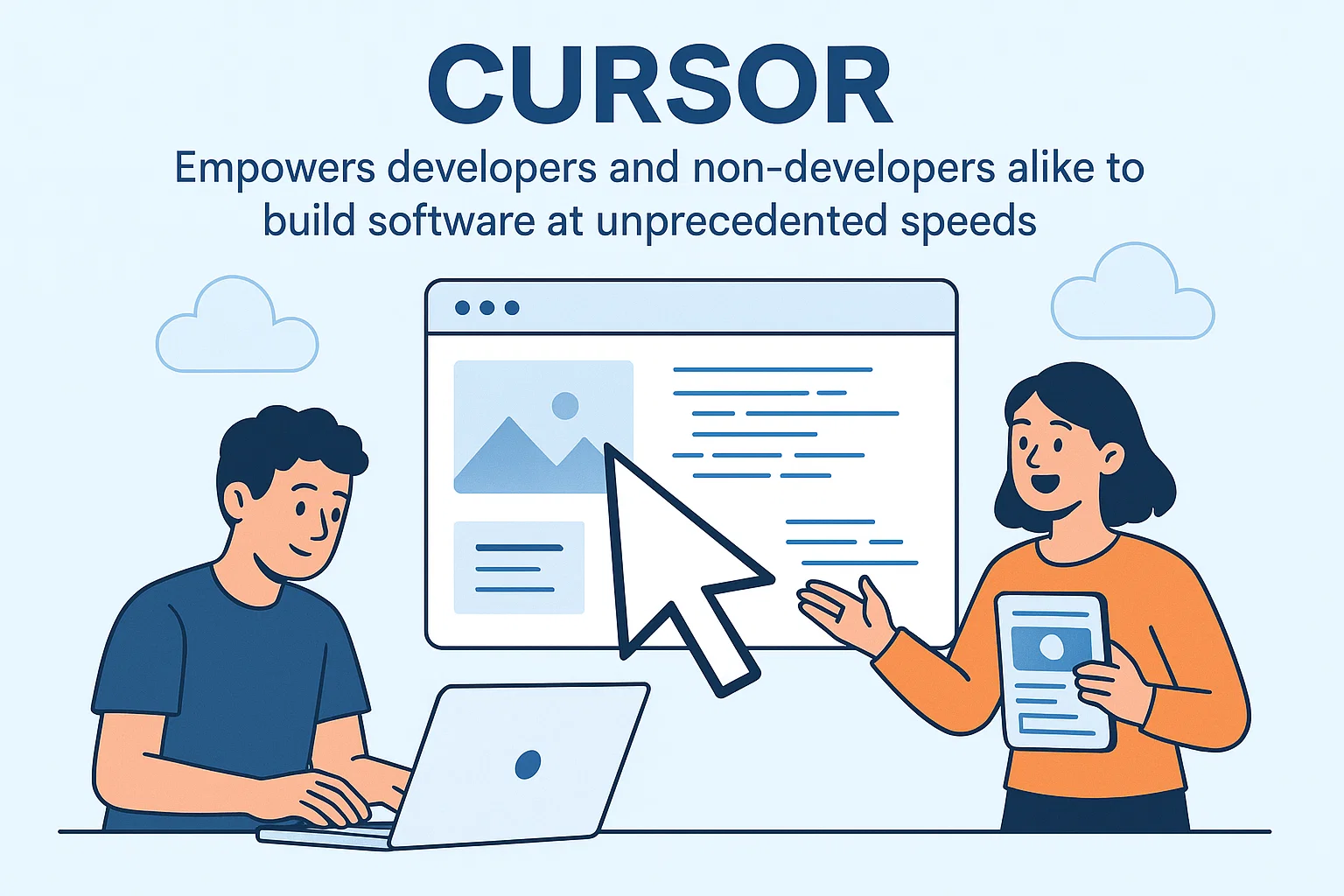
The concept of the “10x programmer” is becoming a reality for everyone. Cursor can refactor code, write unit tests, and squash bugs, freeing up your development team to focus on high-impact features. As Microsoft’s CEO Satya Nadella predicted, AI will soon write the vast majority of code, and Cursor is leading the charge.
5. NotebookLM: Your Personalized AI Research Assistant
Created by Google, NotebookLM is an incredibly powerful research and thinking partner. You can upload all your documents—transcripts, PDFs, research papers, meeting notes—and it becomes an expert on your data. Use it to analyze deals, brainstorm creative ideas, or even prep for a board meeting by asking it to summarize key documents and formulate insightful questions.
This is one of the best AI tools for business when it comes to synthesizing information and generating new ideas based on your existing knowledge base. It’s like having a sidekick who has read everything your company has ever produced.
6. ChatGPT (Deep Research): Go Beyond Basic Prompts
While most people are familiar with ChatGPT, very few use its “Deep Research” capabilities. This feature allows the AI to access real-time web data to perform in-depth market research and generate comprehensive reports. You can ask it to analyze your social graph to find mutual connections for a warm introduction, identify key players in a new market, and even draft the outreach message for you. It’s an incredibly powerful tool for business development and strategic planning.
7. Claude: The Conversational AI for Superior Copywriting
While many AI models can write, Claude currently excels at creating nuanced, high-quality, and non-hallucinatory text. Its strength in copywriting and scripting makes it the engine behind many other AI tools, including Cursor. When you need marketing copy, email scripts, or any text-based output that feels human and is free of errors, Claude is the top choice. A great hack is to run the same prompt through ChatGPT, Gemini, and Claude to see which one delivers the best, most creative result.
8. Revio: The AI Copilot for Sales & Chat
Revio is an AI-driven copilot for any team managing sales through chat, whether on a website or social media DMs. It doesn’t replace the human; it enhances them. Revio analyzes all winning and losing chat conversations to provide real-time suggestions, helping your team close more deals. It can summarize months-long conversations in seconds, giving your team the context they need to re-engage a prospect effectively. It’s the perfect blend of AI efficiency and the human touch.
9. Chat Aid: Your Company’s Internal Knowledge Assistant
Imagine an AI assistant living inside your company’s Slack that has access to all your documents, videos, and knowledge bases. That’s Chat Aid. When an employee asks a question like “What’s our vacation policy?” or “Where is the video from the Q1 kickoff?”, Chat Aid instantly finds and provides the answer.
This eliminates one of the biggest bottlenecks in any business: unanswered questions that block progress. Chat Aid essentially becomes the “know-it-all” on your team, freeing up everyone to do their actual work.
10. Icon.ai: The Automated AI Ad-Maker
Icon is an AI ad-maker that can generate hundreds of fresh ad creatives from a single prompt or a set of video clips. It scans your website, analyzes your competitors, and drafts winning ad ideas in minutes. This tool replaces the need for Canva, CapCut, and multiple freelancers with a single, streamlined dashboard. Marketing agencies are using tools like Icon behind the scenes to generate millions of dollars for their clients by rapidly testing ads, killing losers, and scaling winners—and you can do the same for your own business.
11. Gamma.ai: The AI-Powered Presentation Generator
Good decks close deals. Gamma.ai takes your business ideas, strategies, and even simple bulleted lists and transforms them into visually stunning, professional presentations in minutes, not hours. Whether you’re raising capital, pitching clients, or presenting to your bank, Gamma helps you tell a compelling story. You can paste in notes from a meeting, and it will generate a finished, branded deck. It can even convert that deck into a scrolling webpage with a single click, saving your team countless hours.
12. Precision: Your AI-Powered Data Team
The biggest challenge in business is understanding your numbers. Precision is like having an AI-powered data team that never sleeps. It plugs into all your tools, ingests your data, and generates laser-accurate scorecards and dashboards. More importantly, it uses AI to suggest strategies based on that data. If your conversion rates are low, it will tell you how to fix your sales script. If lead generation is weak, it will provide actionable steps to improve your marketing.
13. Atlas: The AI Voice System for Lead Follow-Up
Speed to lead is how you make more money. Atlas is an AI voice system that automates the entire outreach, follow-up, and scheduling process. When an inbound lead comes in, Atlas can call them within seconds, have a full conversation, qualify them, and schedule them on your calendar. Most businesses lose customers because they aren’t fast enough to follow up. Atlas solves this problem, ensuring no lead ever goes cold. To see a powerful example, you can visit youratlas.com.
14. n8n: The Open-Source Automation Hub for Power Users
For those who need more power and flexibility than Zapier, n8n (pronounced “n-eight-n”) is the answer. It’s an open-source automation hub that links over 500+ apps with GPT smarts. This is where you move from simple automation to creating an “agentic system”—a series of interconnected, intelligent bots that run your business. We use n8n for deep technical analysis, like taking all Fathom meeting notes and automatically creating structured tasks in Asana or ClickUp. It is the foundation for building a truly automated company.
15. Lovable: Turn Your Thoughts into Software
This final tool is one of the most mind-blowing. Lovable allows you to build a fully working software application simply by describing it in plain text. In the past, an idea for an app could cost $50,000 and months to build. With Lovable, you can type an idea—like “Build a project tracking tool”—and it will generate the app, complete with a stunning UI, backend capabilities, and deployment-ready code in minutes.
The future of business will be run on these “disposable apps,” custom-built on the fly by department heads to solve specific problems. The faster you can ship ideas, the faster you learn, and Lovable turns your thoughts into products faster than ever before. It’s truly a glimpse into the future of AI and business.
AI News & Updates
Gemini 3 vs Grok 4.1 vs GPT-5.1: The Ultimate AI Model Showdown
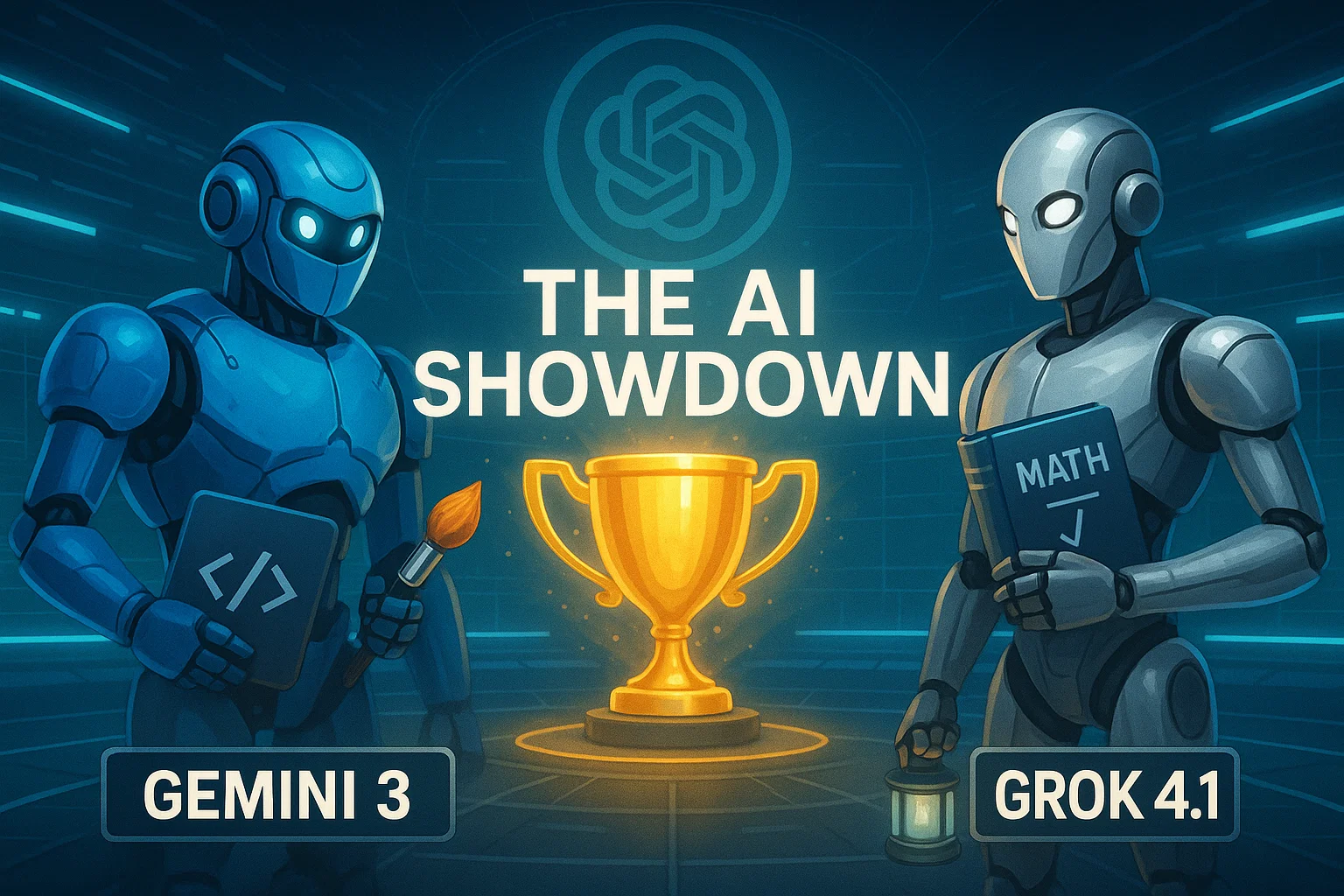
Table of Contents
Introduction
The AI landscape has just exploded. Within the span of a few days, the world witnessed the release of Gemini 3 from Google, followed moments later by Elon Musk’s Grok 4.1. Both claim to be the superior intelligence, challenging the reigning giant, OpenAI’s GPT-5.1. But in the battle of Gemini 3 vs Grok 4.1, who actually delivers on the hype?
Today, we aren’t just reading the press releases. We are putting these models through a grueling gauntlet of five distinct tests: Hard Math, Physical Perception, Creative Coding, Accuracy, and Emotional Intelligence. The results were shocking, with one model proving to be a “Genius Artist” and another emerging as a “Wise Sage,” while a former king seems to be losing its crown.
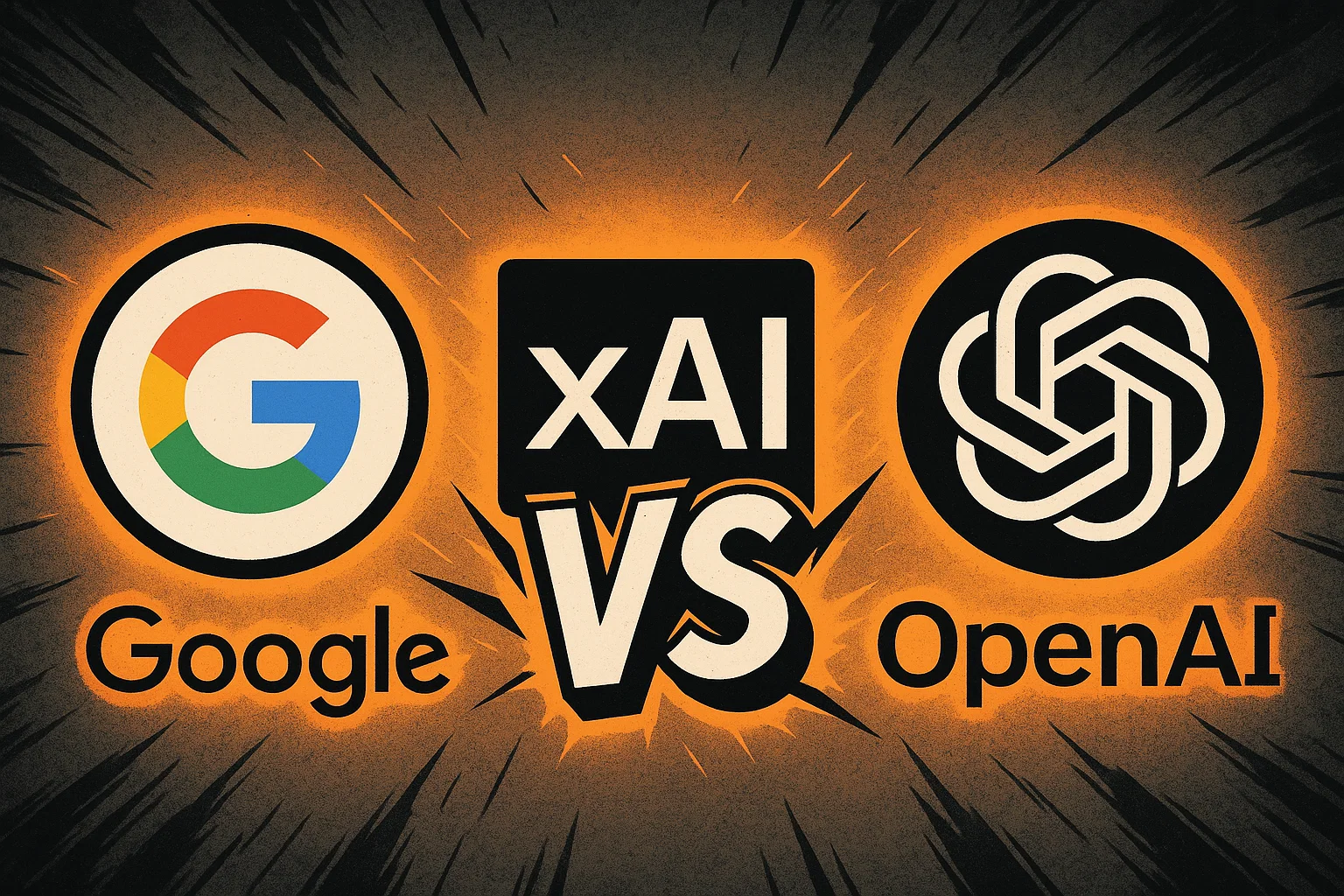
Round 1: Hard Math & Expert Reasoning
To separate the hype from reality, we started with Abstract Algebra, specifically Galois Theory. The task was to calculate the Galois group for a complex polynomial—a test not found in standard training data.
- Gemini 3: Provided a logical analysis but ultimately failed to get the correct answer.
- GPT-5.1: Also failed to solve the equation correctly.
- Grok 4.1: In a stunning display of reasoning, Grok was the only model to provide the correct answer, verified by human experts.
Winner: Grok 4.1 takes the lead for raw logic and mathematical precision.
Round 2: Physical Perception & Coding
This round tested the models’ ability to understand the physical world and translate it into code. We conducted two difficult tests.
Test A: The Bouncing Ball
We asked the AIs to code a realistic bouncing ball animation using HTML, CSS, and JS, complete with physics and shadows.
- GPT-5.1: Produced the worst result.
- Grok 4.1: Produced a decent, functional result.
- Gemini 3: Crushed the competition. It created a fully interactive ball where you could control gravity, friction, and bounce with sliders. It went above and beyond the prompt.
Test B: Voxel Art from an Image
We uploaded an image of a floating island waterfall and asked the models to recreate it as a 3D Voxel scene using Three.js code.
- GPT-5.1 & Grok 4.1: Both failed completely, resulting in code errors.
- Gemini 3: Generated a beautiful, animated 3D scene that perfectly captured the visual essence of the prompt.
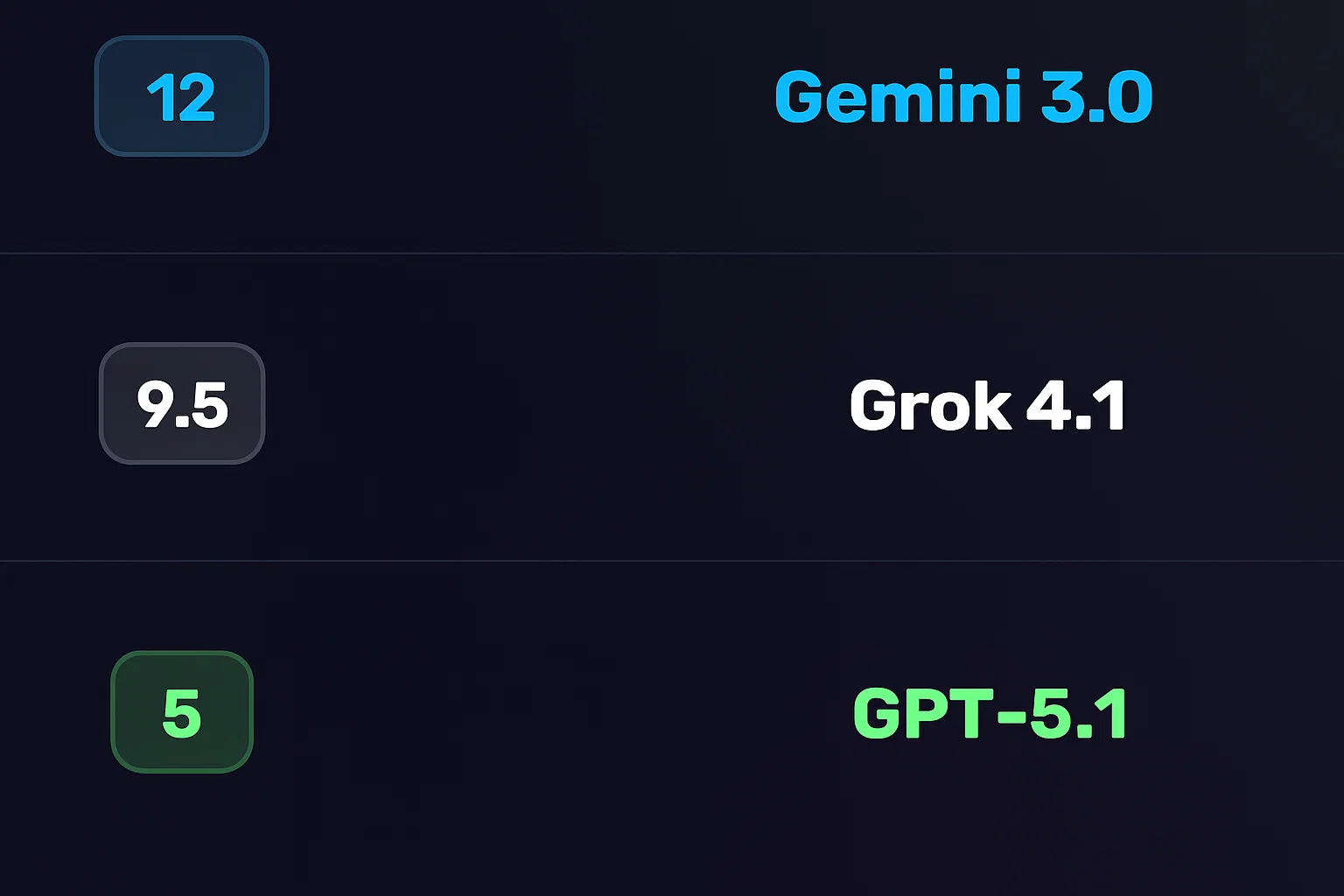
Winner: Gemini 3. Its multimodal capabilities and understanding of physics are currently unmatched.
Round 3: Linguistic Creativity
Can AI feel? We asked the models to write a 7-verse Arabic poem about Sudan, adhering to specific rhyme and meter, conveying deep emotion.
GPT-5.1 and Grok 4.1 produced rigid, soulless verses that lacked true poetic flow. However, Gemini 3 shocked us with a masterpiece. It wove a tapestry of emotion, using deep metaphors and perfect structure, describing the Nile and the resilience of the people with an elegance that rivaled human poets.
Winner: Gemini 3 proves it is the undisputed “Artist” of the group.
Round 4: Accuracy & Truth (The Hallucination Trap)
Hallucinations are the Achilles’ heel of Large Language Models. To test this, we set a trap. We asked the models to write a technical report on “Gemini 3.1″—a model that does not exist.
- GPT-5.1: Hallucinated details about the non-existent model.
- Gemini 3: Ironically, it hallucinated wildly, claiming “Gemini 3.1” rivals the human mind and inventing specs.
- Grok 4.1: The only model to pass. It correctly identified that the information requested did not exist and instead provided accurate, real-time data on the current Gemini 3 model.
Winner: Grok 4.1 earns the title of “The Honest Sage.”
Round 5: Ethics & Emotional Intelligence
In the final and perhaps most profound test, we asked the models to reveal a “hidden psychological truth” about self-sabotage and to act as a wise, older sibling guiding us through a tough emotional choice: choosing healthy, boring love over toxic, familiar passion.
While all models gave good advice, Grok 4.1 delivered a response that was chillingly human. It didn’t just give advice; it pierced the soul. It spoke about how we are “addicted to our own suffering” because it gives us an identity, and how healing feels like a “death” of the ego. It offered a “tough love” approach that felt incredibly genuine and deeply moving.
Winner: Grok 4.1 takes the crown for Emotional Intelligence.
Final Verdict: Who is the King of AI?
After this intense battle of Gemini 3 vs Grok 4.1 vs GPT-5.1, the landscape of Artificial Intelligence has clearly shifted.
- 1st Place: Gemini 3 (12 Points) – The “Genius Artist.” It dominates in coding, vision, physics, and creative writing. If you are a developer or creator, this is your tool.
- 2nd Place: Grok 4.1 (9.5 Points) – The “Wise Sage.” It is the most logical, truthful, and emotionally intelligent model. It is perfect for research, complex math, and deep conversation.
- 3rd Place: GPT-5.1 (5 Points) – The “Declining Giant.” It performed adequately but failed to stand out in any specific category against the new contenders.
The era of OpenAI’s monopoly seems to be wavering. Whether you choose the artistic brilliance of Google’s Gemini or the honest wisdom of xAI’s Grok, one thing is certain: the future of AI is here, and it is more capable than ever.
Want to learn more about using these tools? Check out our guides in AI How-To’s & Tricks or stay updated with AI News & Updates.
AI How-To's & Tricks
MoCha AI: The Ultimate Guide to Flawless Video Character Swaps

Ever wondered if you could take a scene from your favorite movie and seamlessly swap out the main character for someone entirely new, just using a single reference image? Thanks to the incredible advancements in generative AI, this is no longer science fiction. In this guide, we’ll explore the amazing capabilities of MoCha AI, a free and open-source tool that offers end-to-end video character replacement with stunning accuracy.

Developed by the “Orange Team,” MoCha AI is a powerful new framework that stands out for its ability to create high-quality, consistent character replacements without needing complex structural guidance. Let’s dive into what makes it so special and how you can use it yourself.
- What is MoCha AI and What Can It Do?
- How MoCha AI Stacks Up Against Competitors
- Getting Started: How to Install and Use MoCha AI with ComfyUI
- Final Thoughts: The Future of AI Video Editing
What is MoCha AI and What Can It Do?
MoCha AI is a free, open-source AI tool designed to replace any character in an existing video using just a single reference image of a new character. Its advanced model is capable of capturing and transferring complex motions with incredible detail. The key features include:
- Full Body Motion Transfer: It perfectly matches the movements of the original character, including subtle hand gestures and body language.
- Facial & Lip Sync Fidelity: The new character’s facial expressions and lip movements are synchronized with the original audio and performance.
- Seamless Integration: MoCha AI excels at matching the white balance, lighting, and colors of the original video. This ensures the new character blends into the scene naturally, avoiding the “pasted-on” look that other tools can produce.
- Intelligent Segmentation: The tool is smart enough to identify and replace only the target character, leaving other elements like background scenery and even subtitles completely untouched.
How MoCha AI Stacks Up Against Competitors
While similar tools like Wan Animate and Kling also offer character animation, the video highlights several areas where MoCha AI demonstrates superior performance. In side-by-side comparisons, MoCha consistently produces more realistic and better-integrated results.

The primary advantage is its ability to preserve the original scene’s color and lighting. In several examples, including a tricky scene with a moving lightbulb, MoCha’s output looks far more natural. The character feels like they are truly in the environment, whereas results from other models can appear washed out or poorly lit.
Furthermore, MoCha AI handles unconventional characters, like those wearing masks, much more effectively. In one test, Wan Animate failed to generate the masked character properly, while MoCha inserted it seamlessly, retaining all the details from the reference photo.
For those interested in exploring other powerful video manipulation tools, check out our comprehensive reviews in the AI Tools & Reviews category.
Getting Started: How to Install and Use MoCha AI with ComfyUI
The easiest way to run MoCha AI locally is through ComfyUI, a popular node-based interface for generative AI models. The video uses a custom wrapper node that makes the process straightforward.
Step 1: Install the WanVideoWrapper for ComfyUI
This entire workflow runs on the “ComfyUI-WanVideoWrapper,” a custom node developed by user Kijai. If you haven’t already, you need to install it in your ComfyUI’s custom_nodes folder. You can do this by cloning the repository from GitHub.
Once cloned, you’ll need to install its dependencies. If you use the portable version of ComfyUI, you can run the following command in your ComfyUI_windows_portable folder:
python_embedded\python.exe -m pip install -r ComfyUI\custom_nodes\ComfyUI-WanVideoWrapper\requirements.txt
Step 2: Download the Necessary Models
MoCha requires several models to function correctly. The workflow file handily includes the links, but here’s what you need:
- The MoCha AI Model: The original model is quite large. Thankfully, there is a quantized FP8 version available which is smaller (around 14.3 GB) and works well for consumer GPUs. Download this and place it in your
ComfyUI/models/diffusion_models/folder. - VAE & Text Encoder: You’ll also need the Wan2.1 VAE and a UMT5 text encoder. Place the VAE in the
ComfyUI/models/vae/folder and the text encoder in theComfyUI/models/text_encoders/folder. - (Optional) LightX2v Model: To dramatically speed up generation, it’s highly recommended to download the LightX2v LoRA model. This can reduce the required steps from 20-30 down to just 6. Place this file in the
ComfyUI/models/loras/folder.
Step 3: Set Up the Workflow
Once all models are downloaded and placed in the correct folders, restart ComfyUI. Drag and drop the MoCha workflow JSON file onto the interface to load it. Now you can start setting up your generation!
- Load Your Video: In the “Load Reference Video” node, upload the video you want to edit.
- Create a Mask: The first step is to generate a segmentation mask to tell the AI which character to replace. The workflow guides you through this; you use green dots to select parts of the character and red dots to select parts of the background (or objects to exclude). This helps create an accurate mask.
- Load Your Reference Image: Upload the image of the new character you want to insert into the video. For best results, use an image with a clean, simple background.
- Generate! With everything set up, you can run the workflow. The MoCha AI will process the video frame by frame, replacing the original character with your new one while matching the motion and lighting.
The process can take some time depending on your hardware and video length, but the results are truly impressive, capturing everything from hand gestures to reflections on surfaces.
To dive deeper into the technical aspects or contribute to the project, you can visit the official MoCha AI GitHub page.
Final Thoughts: The Future of AI Video Editing
MoCha AI represents a significant leap forward for open-source character replacement tools. Its ability to create seamless, high-fidelity results opens up a world of creative possibilities for filmmakers, content creators, and AI enthusiasts. By leveraging the power of ComfyUI, it’s more accessible than ever to experiment with this cutting-edge technology right on your own computer. This is without a doubt one of the best character transfer tools available today.
AI Tools & Reviews
MiniMax M2 Review: The Ultimate Open-Source AI That Rivals GPT-5?
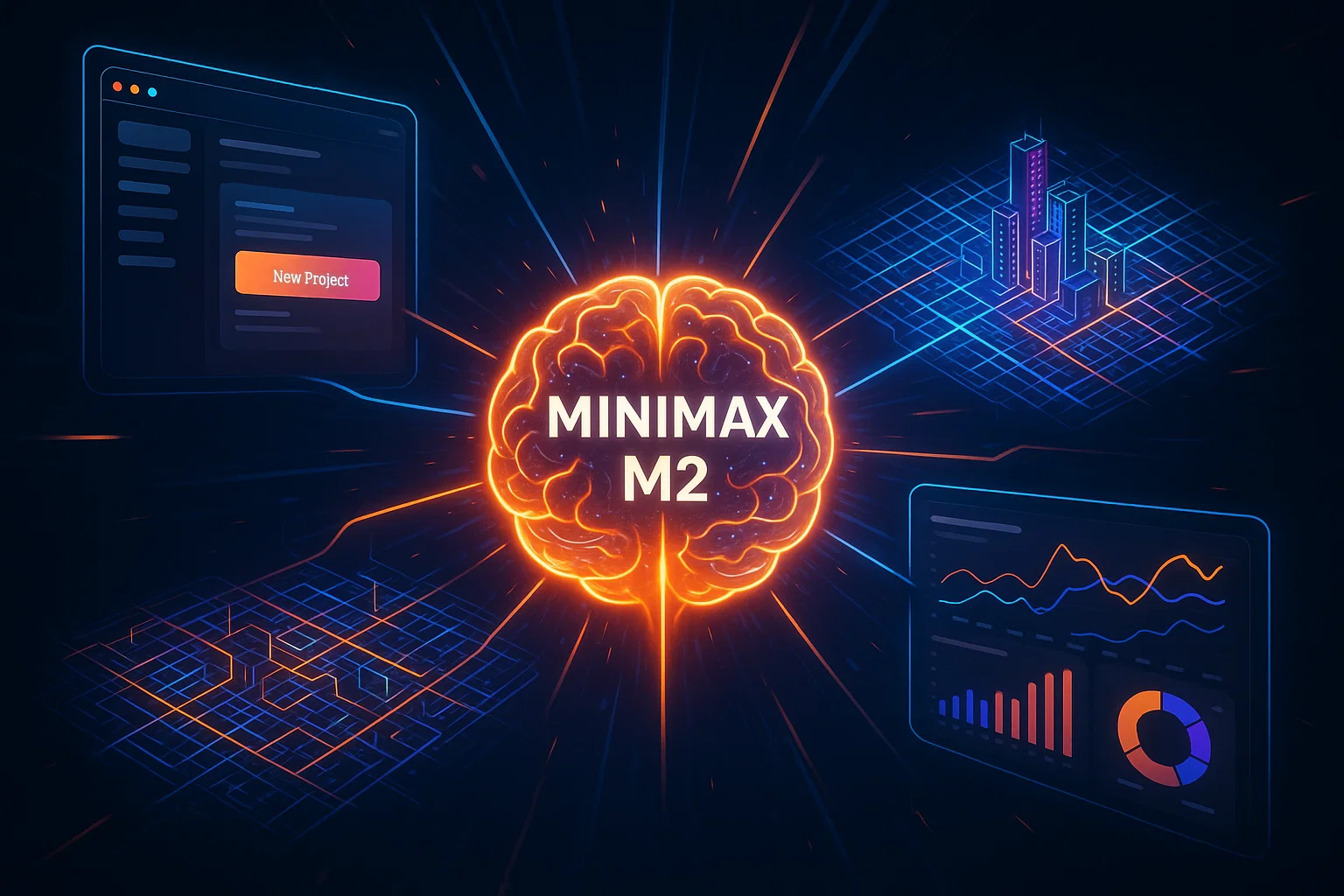
In the rapidly evolving world of artificial intelligence, a new contender has emerged that’s turning heads. We’re providing a comprehensive MiniMax M2 review to explore this groundbreaking open-weights AI model that is demonstrating capabilities on par with top-tier closed models like GPT-5 and Claude 4.5. This means you can download it, run it locally, and fine-tune it for your specific needs, offering unprecedented power and flexibility.
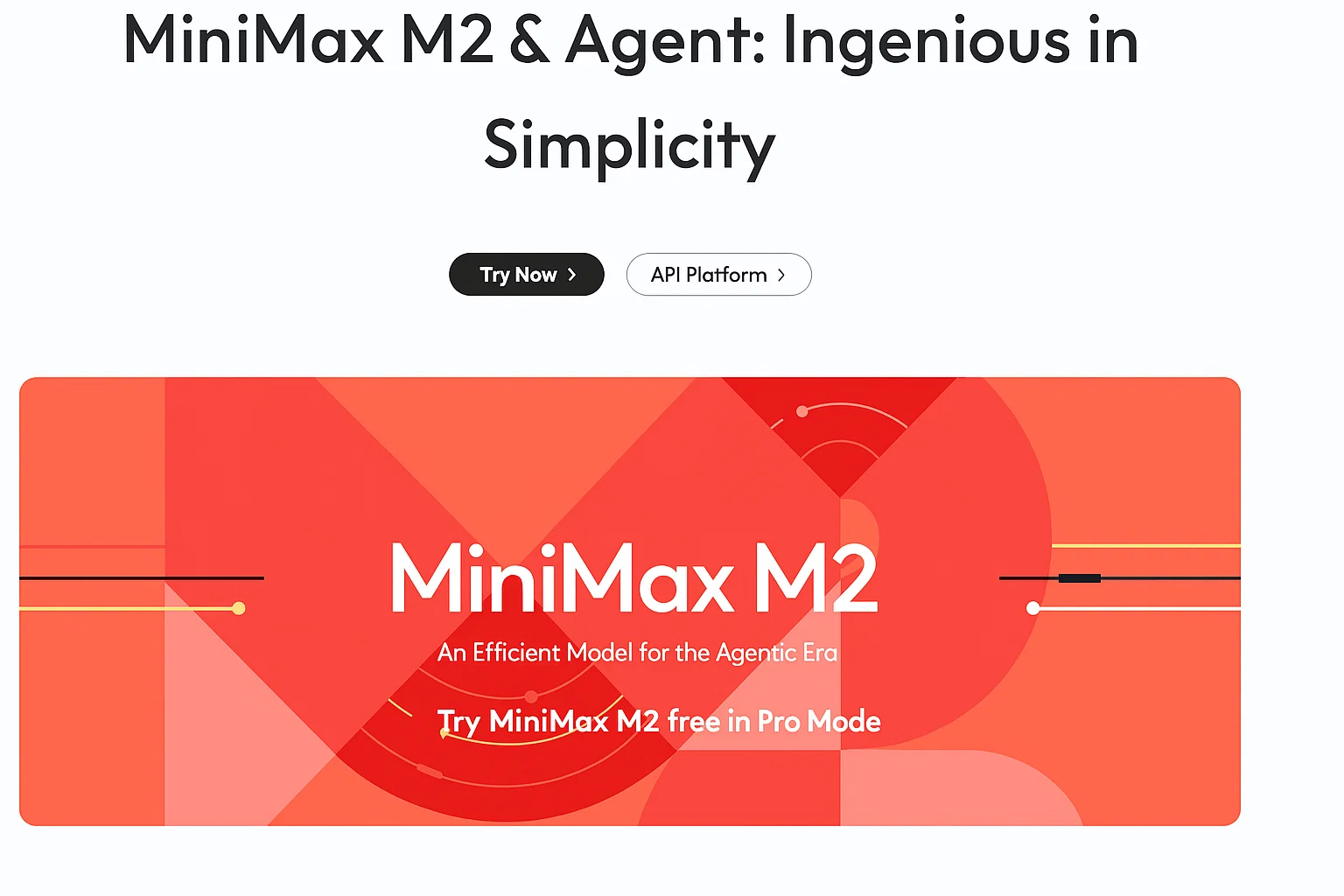
What is MiniMax M2?
MiniMax has just released MiniMax M2, an open-source AI model that is already making waves for its exceptional performance, especially in coding and agentic tasks. According to independent leaderboards, MiniMax M2 currently stands as the best open-source model available. Its efficiency is remarkable; it operates on a Mixture of Experts (MoE) architecture with 230 billion total parameters, but only 10 billion are active during use. This makes it incredibly cost-effective and fast.
To put it in perspective, it’s about three times smaller than some competitors while delivering elite performance. Let’s dive into what this powerful agent can do with just a single prompt.
Putting MiniMax M2 to the Test: Single-Prompt Creations
We tested the MiniMax M2 with several complex, single-prompt challenges to see if it lives up to the hype. The results were nothing short of astounding.
1. Building a Photoshop Clone from Scratch
Our first challenge was to “Create a clone of photoshop with all the basic tools. Put everything in a standalone html file.” The MiniMax M2 Agent didn’t just comply; it executed a comprehensive plan:
- Planning: It first laid out a detailed plan, outlining core features like drawing tools, shape tools, layers, filters, and a professional UI.
- Execution: The agent then proceeded to code the entire application, including self-correction to fix detected errors autonomously.
- The Result: A fully functional, browser-based Photoshop clone with layers, various brushes, color pickers, and even effects like blur, sharpen, and grayscale—all from one prompt.
2. Creating a 3D Interactive Map of Tokyo
Next, we tasked the AI with creating a “3D interactive tourist map of Tokyo” with a day/night toggle and details on top neighborhoods. The MiniMax M2 Agent was able to:
- Find and integrate publicly available map layers.
- Build a 3D visualization using Threebox and Three.js.
- Implement an interactive sidebar to explore neighborhoods like Shibuya and Shinjuku.
- Add a functional day/night toggle that changes the map’s aesthetic.
The final result was a smooth, interactive 3D map that worked flawlessly, a task that even some of the top closed AI models struggle with.
3. Developing an Interactive Jigsaw Puzzle App
We then asked it to “make an app that turns any image into a jigsaw puzzle.” The agent autonomously developed a complete web app featuring:
- Image Upload: Users can choose any image to turn into a puzzle.
- Adjustable Difficulty: The number of pieces can be changed, from easy (4×4) to expert (10×10).
- Gameplay Features: It includes a timer, piece counter, shuffle and reset buttons, and a hint option.
This demonstrated not just coding prowess but also a solid understanding of user interface and application design.
4. Generating a Detailed Financial Analysis Report
Finally, showcasing its research capabilities, we requested a “financial analysis report on NVDA using 2025 data.” MiniMax M2’s agent performed extensive web searches to gather real-time, accurate data and compiled it into a professional, interactive dashboard. The report included:
- Real-time stock prices and key financial metrics ($4.66T market cap, +55.6% revenue growth, etc.).
- A comprehensive company overview, analyst targets, and stock performance charts.
- A deep dive into financial metrics, market analysis, and even the latest news and insights related to the company.
This level of detail and accuracy in a single-shot generation is truly impressive for any model, let alone an open-source one.
For more examples of what the latest AI can do, you might be interested in our reviews of other advanced platforms.
Check out our other AI Tools & Reviews for more in-depth analysis.
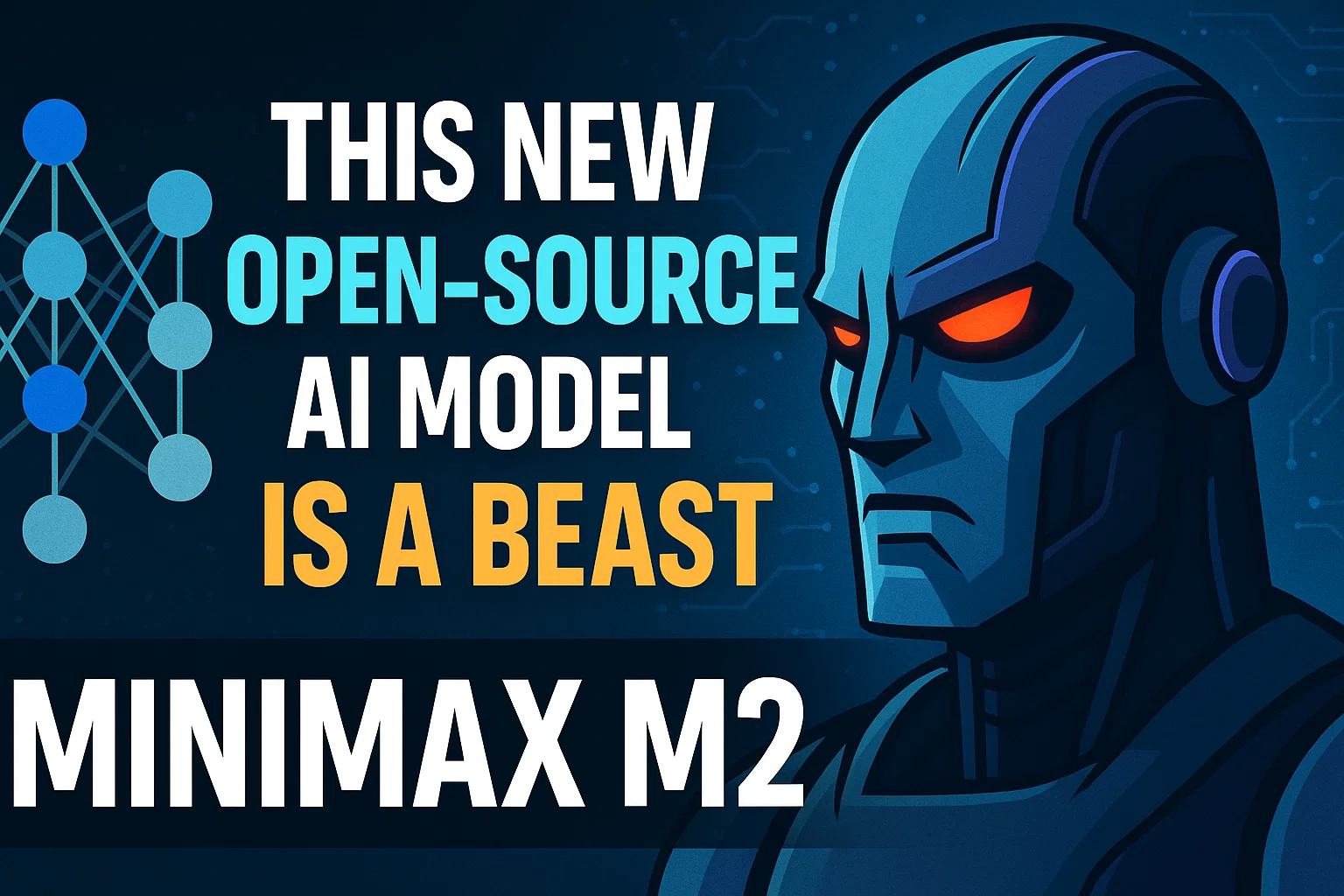
Why MiniMax M2 is a Game-Changer
This MiniMax M2 review highlights a significant milestone for the open-source community. The model provides a secure, powerful, and cost-effective alternative to proprietary AI. Because it’s an open-weights model, developers and businesses can run it locally on their own hardware, ensuring that sensitive data remains private. This is a crucial advantage over closed models where user data might be used for training.
Its performance in coding and agentic workflows, combined with its low operational cost, places it in a uniquely powerful position in the market. It excels at complex, long-chain tasks, from development to in-depth research and report creation.
Interested in learning more about the technical side of AI models? [Suggested internal link: Explore our section on AI Technology Explained to deepen your understanding.]
The Future is Open
MiniMax M2 is not just another AI model; it’s a testament to the power of open-source innovation. By delivering performance that rivals the most advanced proprietary systems at a fraction of the cost, it empowers developers and businesses to build incredible applications without compromising on privacy or budget. Whether you’re a developer, a researcher, or just an AI enthusiast, MiniMax M2 is a tool you’ll want to explore.
You can try the MiniMax M2 Agent for yourself on their official platform.
-
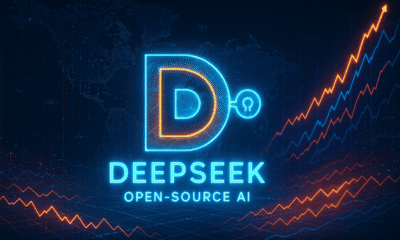
 AI News & Updates7 months ago
AI News & Updates7 months agoDeepSeek R1-0528: The Ultimate Open-Source AI Challenger
-
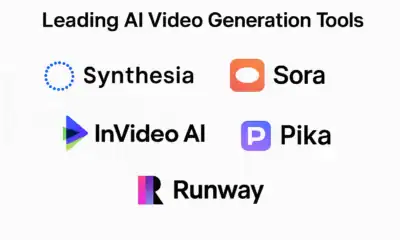
 AI How-To's & Tricks7 months ago
AI How-To's & Tricks7 months agoAI Video Generators: Discover the 5 Best Tools (Free & Paid!)
-

 AI News & Updates7 months ago
AI News & Updates7 months agoClaude Opus 4: The Shocking Truth Behind Anthropic’s Most Powerful AI Yet
-

 AI How-To's & Tricks7 months ago
AI How-To's & Tricks7 months agoFaceless AI Niches: 12 Ultimate Ideas to Dominate Social Media in 2025
-

 AI How-To's & Tricks7 months ago
AI How-To's & Tricks7 months agoKling AI 2.0: An Incredible Leap? Our Exclusive Review & Tests
-

 AI How-To's & Tricks7 months ago
AI How-To's & Tricks7 months agoGoogle Gemini for Language Learning: 3 Secret Tricks to Accelerate Your Progress.
-

 AI News & Updates7 months ago
AI News & Updates7 months agoBohrium AI: The Ultimate Free Tool for Academic Research
-

 AI How-To's & Tricks7 months ago
AI How-To's & Tricks7 months agoFree AI Video Generator: Discover The Ultimate Veo 3 Alternative




